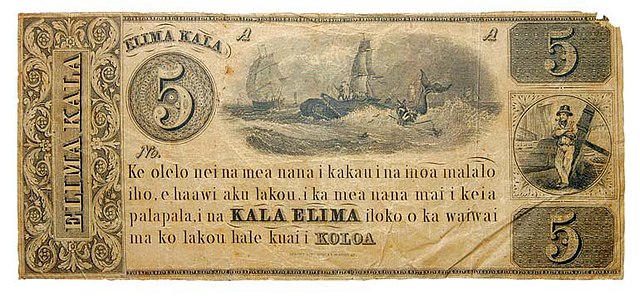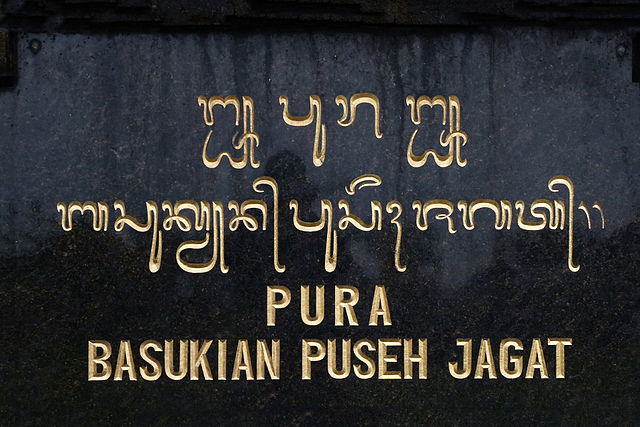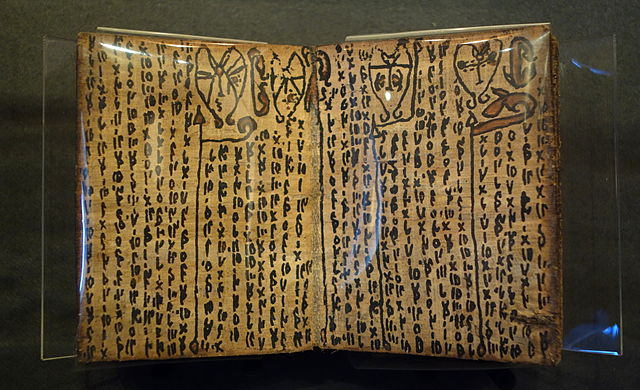The Batak script is a writing system used to write the Austronesian Batak languages spoken by several million people on the Indonesian island of Sumatra. The script may be derived from the Kawi and Pallava script, ultimately derived from the Brahmi script of India, or from the hypothetical Proto-Sumatran script influenced by Pallava.
Batak book about the art of divination from a rooster (Robert C. Williams Paper Museum in Atlanta, Georgia, USA)
Batak script carved into a bamboo tube with wooden stopper (Museum of the Tropics in Amsterdam, the Netherlands)
Bamboo inscribed with Simalungun Batak script (National Museum of Ethnology in Leiden, The Netherlands)
Batak palm leaf book (Museum of the Tropics in Amsterdam, the Netherlands)
The Austronesian languages are a language family widely spoken throughout Maritime Southeast Asia, parts of Mainland Southeast Asia, Madagascar, the islands of the Pacific Ocean and Taiwan. They are spoken by about 386 million people. This makes it the fifth-largest language family by number of speakers. Major Austronesian languages include Malay, Javanese, Sundanese, Tagalog, Malagasy and Cebuano. According to some estimates, the family contains 1,257 languages, which is the second most of any language family.
The distribution of Austronesian languages
A 5 dollar banknote, Hawaii, c. 1839, using Hawaiian language
A sign in Balinese and Latin script at a Hindu temple in Bali
A manuscript from the early 1800s using the Batak script








